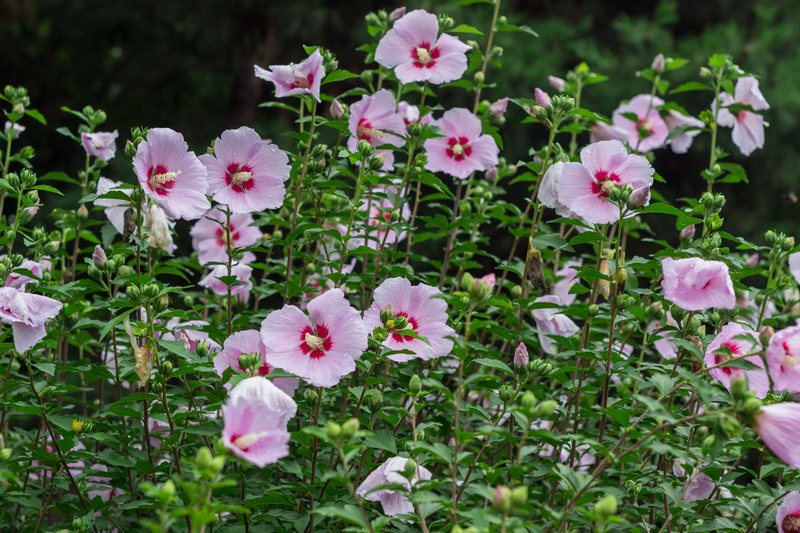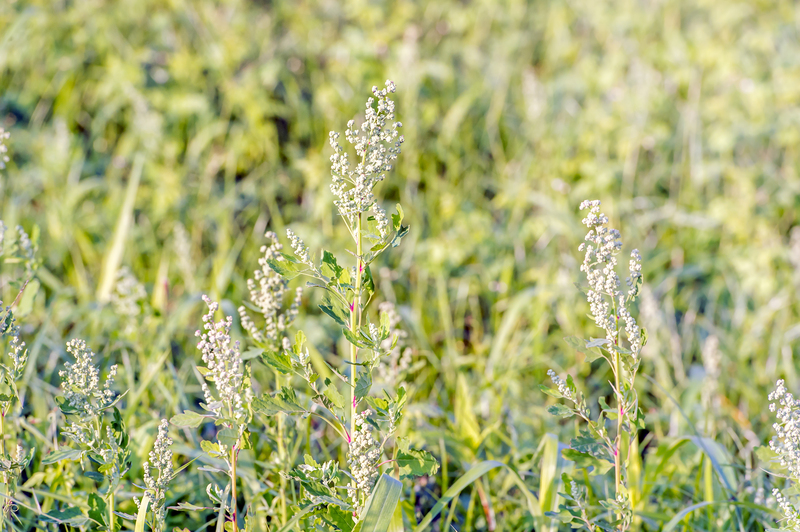Green Thumb Secrets to Flourishing Herb Gardens
Posted on 27/08/2025
Green Thumb Secrets to Flourishing Herb Gardens
Herb gardening offers immense satisfaction, practical use, and visual delight, all within arm's reach. Whether you're a seasoned horticulturist or just planting your first window box, cultivating a thriving herb patch provides fresh flavors, aromatic experiences, and healthful remedies right at home. Ready to unlock time-tested green thumb secrets for a flourishing herb garden? This comprehensive guide unveils actionable tips and insider strategies to help your herbs reach their fullest, greenest potential.
Why Grow Your Own Herb Garden?
Before digging into the specifics, it's essential to recognize the abundant benefits of nurturing your own herb garden. Here's why homegrown herbs are a rewarding pursuit:
- Incredible Freshness: Nothing beats the vibrant flavor and aroma of freshly picked herbs.
- Money Saver: Growing your own herbs costs less than buying bunches at the market.
- Health Boost: Homegrown means no pesticides or preservatives--just 100% pure herbs.
- Convenience: Snip what you need right outside your kitchen window or door.
- Pollinator Paradise: Many herbs attract bees, butterflies, and beneficial insects.
- Decorative Value: Herb gardens are lush, beautiful, and fragrant additions to any landscape.
Let's dig into the green thumb secrets that turn a standard patch into a lush, productive herb paradise.

Choosing the Perfect Location for Your Herb Garden
Sunlight: The Number One Herb Garden Secret
Sun exposure is the most important factor for flourishing herb gardens. The majority of culinary herbs--think basil, rosemary, thyme, oregano, and sage--crave at least 6 to 8 hours of direct sunlight daily. For shady spots, opt for chervil, mint, or parsley, which tolerate partial sun.
- Observe Your Space: Track how sunlight moves through your garden.
- South-Facing Spaces: These are prime for most sun-loving herbs.
- Use Containers: Move pots as needed to maximize sun exposure.
Tip: If you must plant indoors, place pots right next to a sunny window or use a grow light.
Soil--The Unsung Hero of Herb Gardens
The secret to robust, thriving herbs is well-draining, nutrient-rich soil. Avoid heavy clay or compacted soils that retain water. Instead:
- Mix in compost, aged manure, or worm castings to boost fertility.
- Test soil pH; most herbs prefer slightly alkaline stacks (pH 6.0-7.5).
- Use raised beds or planters if your native soil drains poorly.
The Importance of Proper Watering
Water Wisely for Abundant Growth
Overwatering is the most common mistake in herb gardening. Most culinary herbs originate from the Mediterranean and prefer soil that's lightly moist--not soggy.
- Check the Soil: Poke your finger one inch deep. If it feels dry, water. If moist, wait another day.
- Water at the Base: Avoid wetting leaves to prevent fungal diseases.
- Morning Routine: Water early in the day to give plants time to dry out before nightfall.
- Mulch: Add a thin layer of straw or compost to retain moisture and reduce weeds.
Pro Tip: Terracotta pots naturally wick away excess moisture and help prevent overwatering, making them perfect for herb containers.
Companion Planting: Herbs That Thrive Together
Take your green thumb skills to the next level by pairing compatible herbs:
- Basil and Tomato: Basil repels pests and boosts tomato flavor.
- Parsley and Chives: Both love rich soil and promote healthy growth.
- Sage and Rosemary: Both prefer drier soil and plenty of sun.
Keep invasive herbs like mint and oregano in separate pots or confined beds, as they spread aggressively and can crowd out neighbors.
Essential Herbs Every Flourishing Garden Needs
If you're new to herb gardening, begin with these beginner-friendly, multipurpose herbs:
- Basil: Sweet, aromatic, essential for Italian and Thai recipes.
- Rosemary: Woody and hardy, perfect for roasting meats or vegetables.
- Parsley: Lush, bright, and full of nutrients; great for garnishes.
- Thyme: Versatile and drought-tolerant, used in countless dishes.
- Mint: Refreshingly fragrant, perfect for drinks, desserts, and pest deterrence.
- Cilantro: Essential for Latin and Asian cuisine, with edible seeds (coriander).
- Sage: Earthy, medicinal, and beautiful with blue flowers.
- Dill: Feathery leaves ideal for seafood, pickles, and salads.
Secrets to Planting and Propagation
Starting from Seed
-
Indoors: Use a seed-starting mix and keep containers warm and moist.
Example: Basil, dill, and parsley all do well when started inside 6-8 weeks before the last frost. - Direct-Sow: Some herbs, like cilantro and dill, dislike transplanting and are best seeded in place.
Transplanting Seedlings
- Harden Off: Gradually acclimate indoor seedlings to outdoor conditions over a week.
- Spacing: Allow adequate room--typically 8-12 inches--to avoid overcrowding.
Propagating by Cuttings
Certain perennial herbs root quickly from cuttings, saving you money and time. Try this with rosemary, thyme, oregano, and mint.
- Snip a 3-inch stem just below a leaf node.
- Remove lower leaves and dip the cut end in rooting hormone (optional).
- Place in moist potting mix or a glass of water until roots develop.
Nurturing Herbs for Robust Flavor and Growth
Fertilizing for Success
Herbs don't require heavy feeding, but a little boost never hurts:
- Compost: Add a handful to new beds or containers at planting time.
- Light Feeding: Use diluted organic fertilizers monthly for heavy producers like basil.
- Avoid Overfeeding: Too much fertilizer can promote leafy growth but dilute flavor oils.
Pruning and Harvesting--Key Green Thumb Secrets
Regular picking encourages bushy, productive plants and extends the life of annual herbs:
- Pinch Tips: Snip off young, leafy tips regularly to encourage branching.
- Never Remove More Than One-Third: Leave enough foliage so the plant can photosynthesize and recover.
- Remove Flower Buds: For basil, mint, and parsley, pinch back flowers to keep leaves tender and flavorful.
Pro tip: Use clean, sharp scissors or pruners to avoid damaging stems.
Sustainable Pest and Disease Solutions
Common Herb Garden Challenges
- Aphids, Whiteflies, & Spider Mites: Wash away with water or neem oil.
- Fungal Diseases: Water at the base and space plants to maximize airflow.
- Slugs & Snails: Trap with beer, use copper tape, or hand-pick in the evening.
Natural Defenses
Avoid chemical sprays on edible plants. Instead:
- Encourage ladybugs and lacewings (beneficial insects).
- Plant aromatic herbs like chives, garlic, and basil as natural pest repellents.
- Rotate crops every year to reduce disease risk.
All-Season Maintenance for a Thriving Herb Garden
Spring and Summer
- Plant, Prune, and Harvest: Take advantage of the growing season to add new herbs, pinch back stems, and enjoy fresh harvests.
- Monitor for Pests: Check leaves weekly.
Autumn and Winter
- Protect Perennials: Mulch around the base of lavender, thyme, and sage to insulate roots.
- Bring Sensitive Herbs Indoors: Basil, lemongrass, and chives can overwinter on sunny windowsills.
- Drying or Freezing: Preserve excess harvests for winter use.
Creative Ways to Enjoy and Preserve Your Herbs
Make the most of your flourishing herb garden with these creative tips:
- Herb-Infused Oils and Vinegars: Add a gourmet touch to your cooking.
- Homemade Herbal Teas: Steep mint, lemon balm, chamomile, or thyme for refreshing drinks.
- Herb-Butter or Pesto: Blend fresh leaves for delectable spreads.
- Sachet and Potpourri: Dry aromatic herbs like lavender and sage for fragrance indoors.
Smart Herb Garden Design Ideas
Container Herb Gardens
Perfect for urban gardeners, renters, or those with limited space, containers let you:
- Grow a variety of herbs on patios, windowsills, or even balconies.
- Move pots according to sunlight changes throughout the year.
- Combine herbs with similar water and light needs in one generous planter.
Spiral Herb Gardens
Herb spirals elegantly combine vertical gardening with practicality:
- Construct a spiral-shaped mound with stones, bricks, or logs.
- Plant sun- and drought-loving herbs at the top, shade and moisture lovers at the bottom.
- Creates unique microclimates for various herbs in one compact space.
Kitchen Windowsill Gardens
- Maintain fresh access to herbs year-round, regardless of the weather.
- Use quality potting mix and containers with drainage holes.
- Rotate plants every few days to prevent uneven growth.

Frequently Asked Questions About Flourishing Herb Gardens
-
Q: How often should you water herbs?
A: Check soil moisture regularly. Water when the top inch feels dry, typically 2-3 times a week in hot summers, less in cool weather. -
Q: Can you grow herbs indoors year-round?
A: Absolutely! South-facing windows or supplemental grow lights can keep your indoor herb garden thriving through winter. -
Q: What herbs are hardest to grow?
A: Some, like cilantro, bolt (flower prematurely) in heat. Lavender and rosemary can struggle with excess moisture and cold. -
Q: How do you keep herbs from flowering?
A: Regularly pinch off any flower buds. This encourages more leaf growth and prolongs the harvest window.
Final Green Thumb Tips for a Flourishing Herb Garden
- Choose a sunny spot and ensure excellent drainage.
- Start small--grow 3-5 favorite herbs and expand as confidence grows.
- Harvest lightly and often to boost growth and flavor.
- Opt for organic growing practices to keep your herbs healthy and safe to use.
- Stay observant--looking for any signs of pests, disease, or distress.
In conclusion, growing a flourishing herb garden is both an art and a science. By following these green thumb secrets, you'll cultivate a verdant, productive oasis at home--ready to enliven your kitchen, beautify your space, and sustain your well-being all year long. With a little patience, care, and curiosity, every gardener can uncover the true joy of a thriving herb patch--one leaf at a time.

